The Importance Of Comedy: The Connections Between MONSTERS INC & SULLIVAN’S TRAVELS
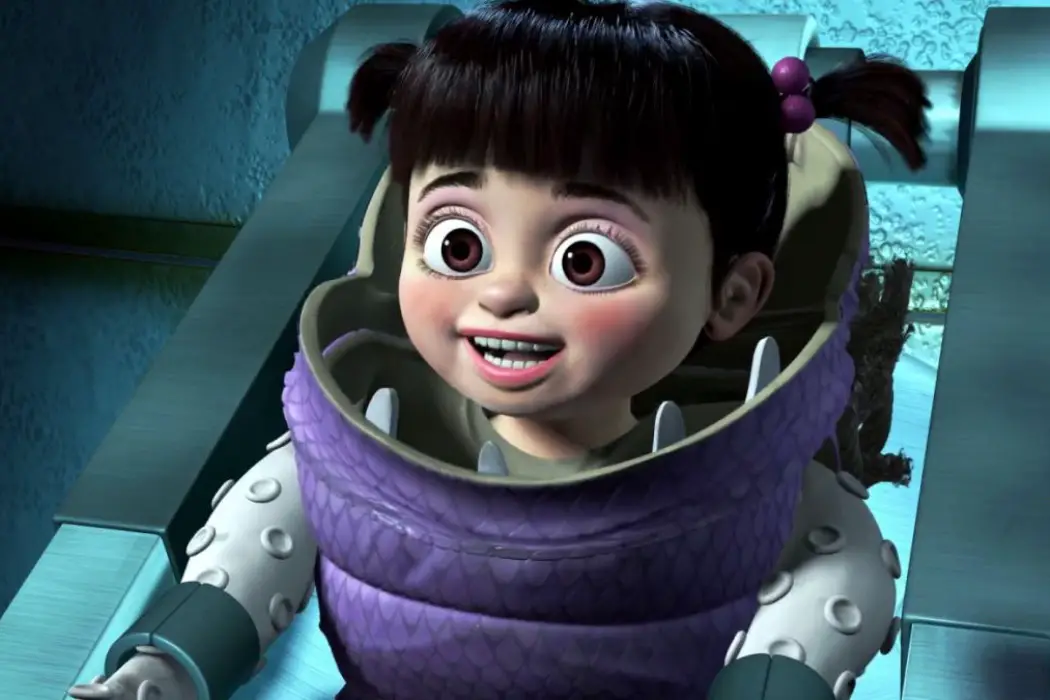
Amanda Mazzillo is a writer with an MFA in Dramatic…
Sullivan’s Travels may not quickly come to mind when watching Monsters, Inc., but after examining both films, there is a connection in not only their themes but their structures as well. When the idea to explore the connections between these films and their focus on the importance of comedy and laughter, I did not expect to discover so many connections to back me up.
From central characters with similar names and similar journeys to explorations of society and its issues, both Sullivan’s Travels and Monsters, Inc manage to showcase their themes while also giving us thoughtful and memorable films with their own unique charms.
Beginning Scenes
Sullivan’s Travels begins with a dramatic film being screened to a room of people at a motion picture studio. In this scene, our main character John L. Sullivan (Joel McCrea), who is known as Sully throughout the film, makes it known that he wishes to go against the career he is so known for, as a comedy film director, and direct a drama.
This does not go over well with the studio heads, but when they realize this can be twisted into a publicity stunt earning their company more money, they seem to go along with it through some carefully told lies made to make Sully feel he has not experienced true trouble in his sheltered life full of boarding schools and big checks.
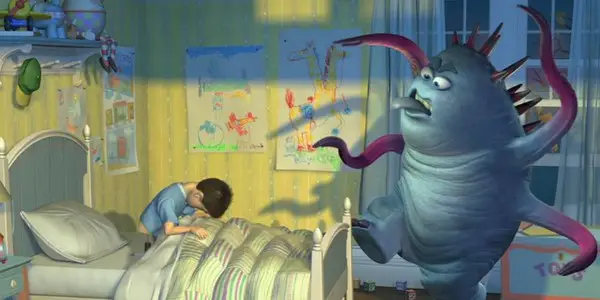
Monsters, Inc. also begins with a false display of emotions in front of the head of a company. In these scene, a new hire for the scaring department of Monsters, Inc does a bad job of scaring a child in a simulation, but he does do a good job of making the audience laugh.
This small moment brings about the idea that laughter is as powerful, or more powerful, force than fear even though we don’t see any laughter happening on the screen. Even though our main character, James P. Sullivan (John Goodman), who is also known as Sulley throughout the film, is not in this moment, the outcome of his journey is referenced.
This moment in Monsters, Inc. also introduces the idea that humans exist in a world far removed from the monster one Sulley exists within, while in Sullivan’s Travels, the idea that Sully wants to make a film about impoverished people, yet he lives in Hollywood, far away from the hardships he wants to explore on screen.
Exploring Real Issues Through Comedy
Monsters, Inc. explores the real world issues of finding alternative energy sources and gas shortages through its story of a city which is powered on the screams of children who are becoming harder and harder to scare over the years.
Sullivan’s Travels uses its comedy to give a voice to the impoverished, even if its main theme is how laughter is something which brings people together and helps people get through their hardships, unlike watching films which explore the very hardships which they are trying to forget.
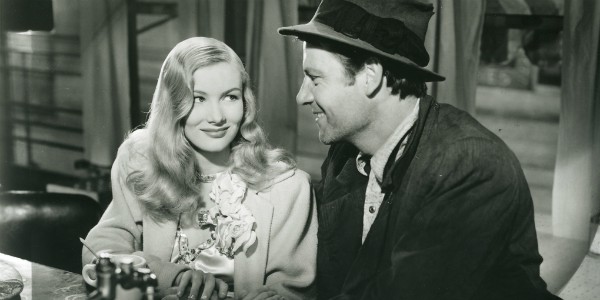
Monsters, Inc. explores acceptance of people unlike us while remaining a comedy at its center. Sulley and Mike (Billy Crystal) encounter a human child after spending their entire lives viewing humans as toxic creatures to be avoided at all costs. By mixing their lives with those they deemed different, Mike and especially Sulley realize the importance of acceptance.
This is similar to how impoverished people are viewed in Sullivan’s Travels, especially the theme of Sullivan’s Travels which shows how films showcasing poverty attract rich audiences wanting to look at someone in a completely different station in life without seeing them as fellow people.
In Sullivan’s Travels, Sully sees how laughter and comedy can bring people of different backgrounds together. In a memorable scene showing a church inviting a chain gang to watch a picture together, we see these different groups come together through their happiness watching the short Playful Pluto.
A Journey of Self-Discovery
Both Joel McCrea’s Sully and John Goodman’s Sulley must go on a journey to discover something about themselves as well as something about the world in which they live. In both of their journeys, the idea which they discover comes around earlier than they are ready to accept it into their lives.
With Sullivan’s Travels, Sully keeps going back to where he started. He hitchhikes and falls asleep in the back of a truck, which went right back to Hollywood where his journey began. Even though he comes back to where he started, he is not yet ready to accept what his journey is telling him, and must continue.
The second time this happens in Sullivan’s Travels is when Sully ends up in Vegas, which is where he was supposed to meet reporters to signify that his journey has ended. In this moment, Sully almost does feel his journey has come to an end, but seeing how he has not accepted the importance of comedy, we know more is to come for him.
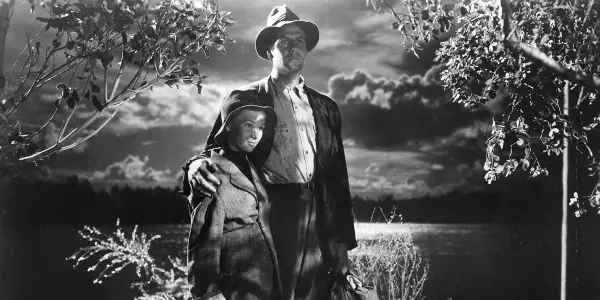
In Monsters, Inc., the idea that laughter is more powerful than screams comes about when Mike and Sulley meet Boo. Her laughter causes a power surge, and even though Sulley and Mike clearly realize the power of her laughter, they do not accept it as an alternate source of energy for their city.
Throughout the film, Sulley asks Mike to make Boo laugh when more power is needed. This especially comes forward in a moment where Mike, Sulley, and Boo are trying to get the doors in the factory to open so they can help Boo get home safe. Sulley is beginning to understand the power of laughter in this scene, but the true revelation comes when Mike mentions that even though they shut down the factory powering the entire town, they “got some laughs”. This simple line pushes the idea of laughter being more powerful than screams to the forefront and causes Mike and Sulley to revitalize the company with a focus on laughter.
In Sullivan’s Travels, the idea of laughter’s power comes up multiple times, but is not truly accepted until one moment during the end of the film when Sully sees this power bring people together.
When Sully and The Girl (Veronica Lake) go off on a journey together and experience poverty firsthand, they share small moments of laughter with each other, making their hardships bearable. Even though Sully does not accept the power of laughter at this moment in the film, his journey is moving forward to its inevitable conclusion.
In another moment signifying the power of laughter, Sully discusses films with The Girl. He mentions his friend, who is actually himself, makes comedy films. When he mentions one of his films, she laughs while thinking back about a particular scene. Her eyes light up when remembering this moment of comedy. Sully does not accept that possibly comedy is where he is supposed to be, but his journey is working its way to its conclusion.
Laughter in Monsters Inc. provides a better energy source than screams because, like you can see in Sullivan’s Travels, it brings people together and helps them forget about their hardships. Being scared is a quick and controlled scream, unlike the uncontrollable laughter which sparks from comedy. Laughter works its way, infectiously through a group of people, and in Sullivan’s Travels, this ends with Sully laughing along with everyone else in the church.
The Kid and The Girl: Characters With No Official Names
In Monsters, Inc., the character who sparks Sulley’s journey of discovery is given the name Boo by him, but by other characters she is simply called The Kid.
This brings to mind how Veronica Lake’s character in Sullivan’s Travels is not given any official name and is instead only called The Girl by every character in the film.
In addition to sharing similar names, or lack of names, these characters both are given disguises during their respective films.
The Girl in Sullivan’s Travels must disguise herself as a boy to travel alongside Sully in his journey to understand what poverty is like. The disguise seems to work okay, yet it is remarked upon by Sully as not being that great of a disguise.
In Monster, Inc., Boo is disguised as a monster child, so she can go with Sulley and Mike to the Monsters, Inc. building without causing a panic, since everyone else sees humans as toxic. Even though her disguise doesn’t even cover her face at times, it seems to work well, and she even joins a group of other monster children.
Mistaken Death Causing Real Emotions
Both Sullivan’s Travels and Monsters, Inc. feature characters who everyone else thinks have died, but are very much alive. This brings out the true emotions of the characters who loved them. In Monsters, Inc., Boo loses one of the eyes from her costume, which ends up in the garbage.
Sulley sees the eye in a cube of garbage, which he grasps onto and cries over her death. How much Sulley cares for Boo comes out in this moment, and Mike, who wanted to just get rid of the kid through most of the film is beginning to feel a little bit of a connection to the child.
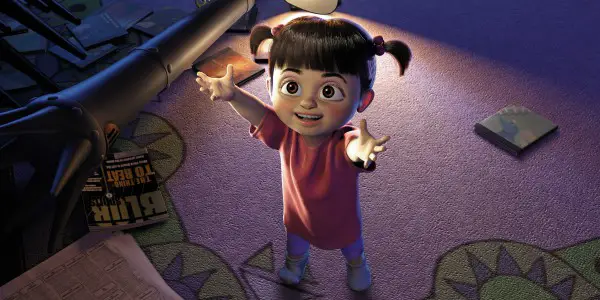
In Sullivan’s Travels, Sully is mistakenly found dead, when the ID card sewn into his shoes is found on the body of the man who stole his shoes in an earlier scene. In order to correct this fake assumption, Sully pleads guilty to killing himself, which puts his picture in the paper. The Girl and the studio heads work together to get Sully back.
Boo laughing and surprising Sulley, who is crying into the cube of garbage, gives a similar feeling of love and family acceptance as The Girl running ecstatically through the studio when she discovers Sully is not dead, and his wife, who would not divorce him, got married the week before.
Satire of Hollywood and Corporate Society
Sullivan’s Travels focuses its satire on Hollywood, while Monsters, Inc. focuses this on the politics of corporate society. The Girl and Sully have many conversations focusing on the stereotypes of actresses making it in Hollywood.
One specifically memorable moment is when she tells Sully she has never had breakfast with a director before, but maybe if she did, her career wouldn’t already be over. She also mentions how hard it is to talk to a casting director or agent when lurking around the corner is an unwanted advance.
Discovering the head of the company in Monsters, Inc. is working with Randall (Steve Buscemi) in his quest to forcefully extract screams from kidnapped children shows just how far someone will go to keep their company afloat.
Randall is shown as an employee wanting to revitalize a dying industry by putting humans, who they look at as toxic and lesser, into harmful situations. Our heroes, Mike and Sulley, manage to revitalize the industry without causing any harm, and instead, making the entire operation more enjoyable for everyone involved.
The way the head of the company wants to do anything to fix the scream shortage runs parallel to how the studio heads in Sullivan’s Travels will go through with Sully wanting to make a drama, but only if it is a publicity stunt, which will make them a bunch of money.
When Sully decides he wants to make a comedy instead, because laughter is the only thing helping some people through their hardships, the studio heads do not want to lose the publicity surrounding the drama. Even though they originally did not want Sully to leave comedy behind, knowing his drama would make them a bunch of money, they do not want him to go back to what they were advising for in the beginning.
The Connections between Monsters, Inc. & Sullivan’s Travels: Conclusion
Both Sullivan’s Travels and Monsters, Inc. explore the power of laughter through journeys into areas in which they are not familiar. Both films focus on stories of acceptance of those different from us and finding a way to bridge the gap between different groups of people. Laughter is a force which brings us together and proves more powerful than expected. As Joel McCrea’s Sully says in the end of Sullivan’s Travels, “There’s a lot to be said for making people laugh. Did you know that’s all some people have?”
What do you think about the depiction of comedy vs fear in both these films? Let us know in the comments below!
Does content like this matter to you?
Become a Member and support film journalism. Unlock access to all of Film Inquiry`s great articles. Join a community of like-minded readers who are passionate about cinema - get access to our private members Network, give back to independent filmmakers, and more.
Amanda Mazzillo is a writer with an MFA in Dramatic Writing from SCAD and a BA in Writing & Linguistics and Film Studies minor from Georgia Southern University. She enjoys writing comedy and exploring all forms of media. Her Twitter name is a bad pun: @mazzillofirefox












